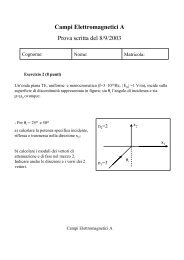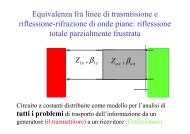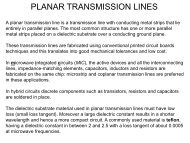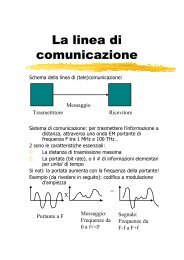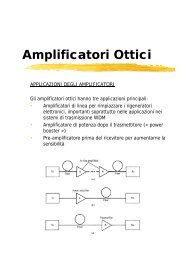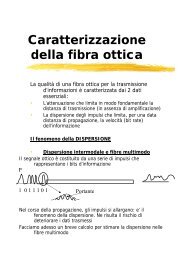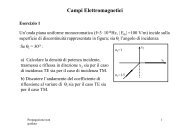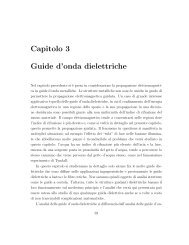Tutorial.pdf
Tutorial.pdf
Tutorial.pdf
You also want an ePaper? Increase the reach of your titles
YUMPU automatically turns print PDFs into web optimized ePapers that Google loves.
Lesson 9: Design of a broadband Raman amplifier using<br />
subsystems<br />
Overview<br />
The number of channels deployed in long-haul DWDM systems is rapidly increasing beyond<br />
hundreds of channels over the C-band (1528-1563 nm) and L-band (1575-1610 nm). This<br />
demand for more bandwidth is driving the search for new and more sophisticated fiber amplifiers<br />
that are flattened over a very wide spectral range for maximum bandwidth transmission over the<br />
long haul.<br />
The specifics of the stimulated Raman scattering effect allow for an interesting technique for gainflattening<br />
of broadband Raman amplifiers (Y. Emori, K. Tanaka and S. Namiki, Electron. Lett. 35,<br />
1355, 1999). It requires only a suitable multiple-pump configuration and does not rely on passive<br />
filters, gratings, etc.<br />
Definition of Multi-line source<br />
At an initial stage of the pump system lets set up a group of twelve pump laser diodes having<br />
“Parameterized” signal representations and the following wavelengths and powers:<br />
LD λ [nm] P [mW] LD λ [nm] P [mW]<br />
1 1405.0 322 7 1450.0 122<br />
2 1412.5 311 8 1457.5 113<br />
3 1420.0 311 9 1465.0 110<br />
4 1427.5 346 10 1480.0 127<br />
5 1435.0 115 11 1495.0 126<br />
6 1442.5 92 12 1510.0 219<br />
After that we multiplex their outputs using, for instance, two multiplexers and a 2x1 power<br />
combiner. The channels of the multiplexers should be accordingly adjusted to the<br />
wavelengths of the pumps, as shown for the case of the 8x1 multiplexer:<br />
Figure 87 -Adjusting multiplexer channels<br />
65



